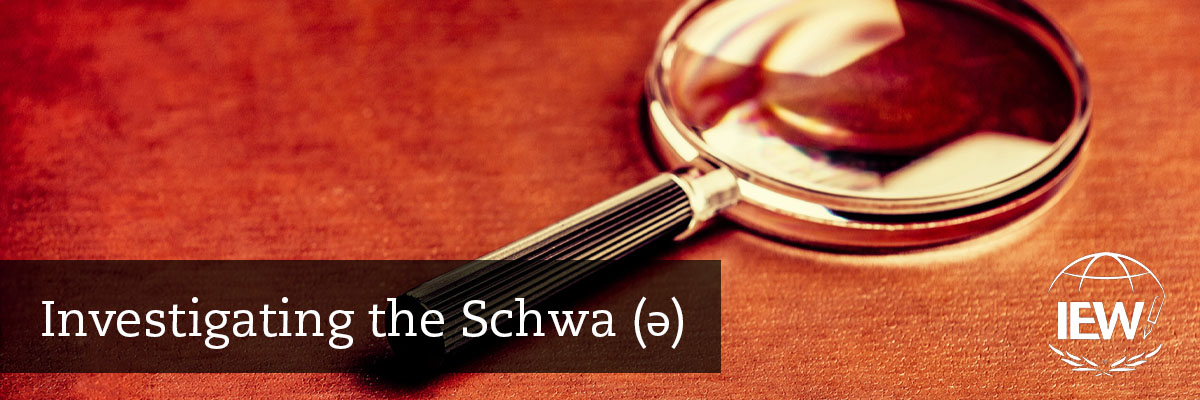In a previous blog post, we introduced the International Phonetic Alphabet. Today we will dig a bit more deeply into one of those symbols: the schwa. If you are a linguist or a dyslexia tutor, the schwa may be a regular topic of conversation. If you are not, though, this may be brand new to you. What is a schwa, and why does it matter? This uniquely named sound is represented by the symbol ə. Schwas make a weak vowel sound and appear in unstressed syllables as well as function words, such as articles, prepositions, conjunctions, and helping and state of being verbs.
For example, take the word canvas. Let’s break it apart: CAN-vas. The schwa is the vowel sound in the final (unstressed) syllable /vus/. In English, many words have a schwa in the final syllable. Here are a few more examples of words that fit this pattern: pickle, cancel, circus, cotton, and pencil.
There is another place where you will encounter the schwa sound. When it appears in the first syllable of words, it is typically because it shows up in a prefix. Words such as until, above, and oppose fit this pattern.
Let’s get down to why all of this matters. Because any vowel’s sound can be pronounced as a schwa, it can make reading and spelling those tricky syllables difficult. Teachers will serve their students well by helping them learn to recognize the stressed and unstressed syllables in words so that they can identify schwas in order to properly read and spell.
While words that have schwas in them generally don’t cause too much difficulty for reading (unless the reader happens to have a learning disability such as dyslexia), spelling words with schwas in them is definitely more challenging. Again, teaching students to attune their ears to the stressed and unstressed syllables in words can help them to recognize when a schwa is likely appearing.
There are several ways you can help your students identify the stressed element in a word. One technique that works well is to have your students practice “Calling the Dog.” Use a word such as basket, and ask them to say the word as if it’s the name of their dog that they’re calling: “BASSS-kit! BASSS-kit!” is what the student will generally holler out, making it easier for him to identify <bas> as the stressed syllable. Stressed syllables are spelled as they sound. The spelling pattern is much more reliable. Schwas, however, are sneaky. When students encounter an unstressed syllable, it alerts them to the possibility that there may be a schwa sound that isn’t spelled as they think they are hearing it. They need to give extra attention to learning the proper spelling for that syllable.
To help your students practice recognizing schwas, prepare a list of words with schwas in them ahead of time, and write them on the board. Reading the words one at a time, stop and help your students use the “Call the Dog” technique to identify the unstressed syllable and locate those pesky schwas. Then mark the syllable with the schwa symbol to identify it. Remind them which syllable is the tricky one for spelling. Before you know it, your students will be confidently identifying schwas in words, which will help them become better readers and spellers.
|
Jennifer Mauser has always loved reading and writing and received a B.A. in English from the University of Kansas in 1991. Once she and her husband had children, they decided to homeschool, and she put all her training to use in the home. In addition to homeschooling her children, Jennifer teaches IEW classes out of her home, coaches budding writers via email, and tutors students who struggle with dyslexia. |


